

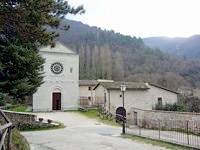
History of San Felice di Narco
Benedictine Abbey
The church here is dedicated to SS Felix and Maurus. The Benedictines established a monastery on the site in the 12th century, having drained the surrounding marshland. They almost certainly compiled the two volumes of legendaries here that Bishop Paolo Sanvitale (1591 - 1600) found during a pastoral visit. The introduction records that the monk Offredo compiled the collection in 1194, in the time of Prior Bernardo I. Bishop Sanvitale transferred them to the Diocesan Archive, together with a third volume (12th century) from San Brizio: the three volumes are now known as the Leggendari del Duomo (Cathedral Legendaries).
Earlier Church
The legend of SS Felix and Maurus in the legendary from the abbey constitutes a foundation legend for the complex. It records that St Maurus and his son St Felix arrived here from Syria at an unspecified date and lived as hermits. At the request of local people, St Maurus killed a dragon that was terrorising the valley. Other miracles followed: among them, the young St Felix restored to life the young son of a widow. When St Felix and his nurse died soon after, St Maurus buried them beside the river and miracles were reported at their tomb.
According to tradition, St Maurus built an oratory here to house the relics of St Felix. Archeological evidence of two ancient hermitages nearby, along with early Christian sarcophagi found here in 1922 and traces of an earlier church found more recently, give some support to these traditions.
Later History
According to later documents (1254-7), the church was under the jurisdiction of the now-demolished Pieve di Santa Maria di Narco.
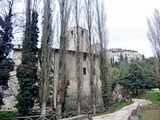
The abbey now operates as a guest house.
Facade
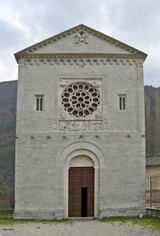
There is a relief of the Lamb of God on the tympanum.
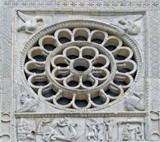

The lovely rose window in the upper order is surrounded by the symbols of the Evangelists, and there is a bifore window to each side of it. The relief below it depict scenes from the legend of SS Felix and Maurus:
-
✴St Maurus killing a dragon as St Felix prays beside angels that protect him (on the left and centre): and
-
✴St Felix reviving the dead son of a poor widow (on the right).
Interior
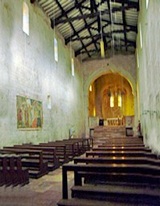
The church has a single nave.
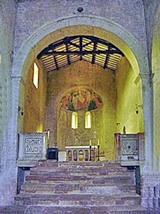
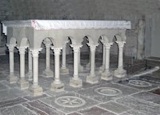
Christ blessing (15th century)
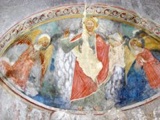
Adoration of the Magi (15th century)
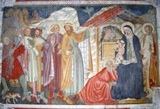
St Michael (15th century)
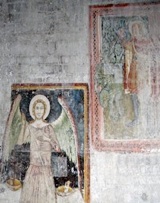
-
✴he weights souls in the fresco on the left; and
-
✴he fights the Devil in the damaged fresco on the right.
Crypt
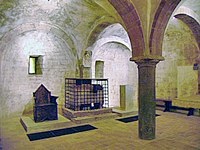
Steps to the sides lead down to the crypt. A central column separates it into two aisles, each of which terminates in a semi-circular apse that contains an altar.
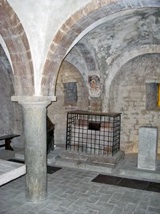
Read more:
L. Pani Ermini, “Gli Insediamenti Monastici nel Ducato di Spoleto fino al Secolo IX”, in:
“Il Ducato di Spoleto, Atti del 9° Congresso Internazionale di Studi sull' Alto Medioevo, Spoleto 1982", Spoleto (1983), Volume II, pp. 541-570
The material on San Felice di Narco is on pp 549-50.
Return to Monuments of Spoleto.
Return to the page on drives around Spoleto.

